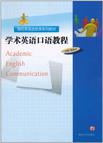学术英语口语教程
出版时间:2011-6 出版社:南京大学出版社 作者:陈美华 编 页数:253
Tag标签:无
内容概要
本书主要供已经完成大学英语基础阶段学习的本科生使用,同时也适用于研究生和具有相当英语水平的专业人士。通过学习可进一步提高学习者的学术英语表达能力,特别是提高学习者在校园、国际会议和其他公开场合进行演讲、宣读论文、即席答辩和交谈讨论等方面的能力。本教程以学术交流为主线,内容主要分为三个部分,每个部分设立一个主题,每个主题由若干章节展开,围绕学术报告、论文宣读、学术讨论、会议主持、辅导咨询、论文答辩等学术交流活动展开听说技能训练,使学生通过本教程的学习在口语能力方面达到《大学英语课程教学要求》较高层次的要求。
书籍目录
Part One Presentation
Unit One Planning Your Presentation
1.1 Definition of presentation
1.2 Differences between conversation and presentation
1.3 The presentation process
1.4 Coping effectively with presentation anxiety
1.5 Speaking in an alapropriate style
1.6 Principles of an effective presentation
Unit Two Structuring Your Presentation
2.1 Focusing on your topic
2.2 Outlining your presentation
2.3 Introduction——starting a presentation
2.4 Body——giving the subject in detail
2.5 Conclusion——summarizing and concluding
Unit Three Delivering Your Presentation
3.1 Using effective visual aids
3.2 Non-verbal comm Unication
3.3 Voice elements
3.4 Performance elements
Unit Four Thesis Defense
4.1 Knowing about thesis defense
4.2 Preparing for a thesis defense
4.3 Delivering a thesis defense
Checklist What Will Be Asked?
Part Two Seminars and Tutorials
Unit One Definition of Seminars and Tutorials
Unit Two Preparing for a Seminar
Unit Three R Unning a Seminar
3.1 Delivering a seminar presentation
3.2 Asking and dealing with questions
3.3 Having discussions
Unit Four Comm Unicating Strategies of a Chair
Unit Five Tutorials and Consultations
5.1 Preparation
5.2 Engaging in discussion
5,3 Taking notes in discussion groups
5.4 Follow-up work
5.5 Conclusion
5.6 Language points
Part Three International Conference
Unit One Obtaining Conference Information
1.1 The internet
1.2 Professional journals
1.3 Membership of professional organizations
1.4 Conference literature
Unit Two Conference and Organizational Information
2.1 Different meetings
2.2 Conference organization and session modes
Unit Three Call for Conference Papers and Conference Notice
3.1 Call for conference papers
3.2 Conference notice
Unit Four Letters and Curriculum Vitae (CV)
4.1 Letter of invitation
4.2 Letter of application
4.3 Letter of acceptance
4.4 Curriculum vitae
Unit Five Conference Presentation and Chairing
5.1 Preparing and delivering presentation
5.2 Chairing a meeting
5.3 Talking with professionals
5.4 Cultural consideration
5.5 Participating in other activities
Keys
Transcripts
Bibliographies
章节摘录
Prior to giving your speech, imagine the execution of your speech in itsentirety: Envision yourself exuding complete confidence as you walk to the podiumand initiate your delivery. See yourself speaking slowly and concisely, making eyecontact with individuals as you move from one audience member to another. Pictureyour audience to be warm andreceptive. Anticipate problem areas and/or mistakesand imagine yourself moving through them gracefully and without incident. If youclose your eyes and visualize yourself successfully delivering the speech, you willliterally trick your brain into believing you've done it and you won't feel as nervous. Utilize notes/outline Well designed outlines and/or notes are acceptable and expected. However,notes should not be read verbatim, and should only be used as reference. Manypeople suffering from public speaking anxiety (stage fright) will use notes as adistraction from making eye contact with their audience. This makes them lookunprepared. Rather, design your outline/notes as such: Write OUt your introductionin full, because this is when yur public speaking anxiety will be at its peak. Usesymbols for key points. Write out transitional sentences in full to avoid abrupttransitions and/or uncomfortable pauses (this will also avoid the "ummms" and"ahhhs" you might feel compelled to use while you are gathering your wits). Writeyour conclusion in full as well, as this will be the summary, of your message, andshould be communicated clearly. This does not mean reading directly from yournotes, but rather, acts as the insurance against forgetting valuable information. ……
图书封面
图书标签Tags
无
评论、评分、阅读与下载
用户评论 (总计24条)
- 在同事的办公桌上看见的,他是南京大学毕业的博士,我想这本书可能是他当时读博的英语教材,随手翻看,内容编排很合理,当晚回家就订下了。今天拿到书,仔细检视,确实没有让我失望。此书分四部分,第一是国际会议,第二是学术信笺往来,第三是学术论文写作,第四是西方文化背景材料选集,包括圣经、莎士比亚等。编写合理,基本能满足国际学术交流的需要,特此推荐。
- 很实用的学术英语口语教程。光盘上的真实国际学术会议视频非常赞!
- 在学术交流,或者探讨问题的时候,除了专业词汇,我想知道交流过程的一些惯用表达法,句子。。。这本书,涵盖的还可以。还得需要专业英语的配合。
- 很好的一本口语教程书,很好
- 质量就这样,上英语老师指定的教材,比实体店买的便宜些。
- 本科教程,内容相对比较简单,很实用。纸张和印刷不是很好
- 纯英文的,要好好学习呢
- 专业书籍,应属研究生教材,内容详实,有视频,有案例,不错。
- 这本书不错的,适合学生用的,很不错
- 要多看吧,现在还没体会到它的好
- 正版,不过买教材真是浪费钱啊
- 还可以,不错,正在看,希望有所帮助
- 书的质量很好的,又便宜,物流也快,赞赞赞!
- 看的舒服
- 有光盘的,书还不错,快递也很快
- 很好的书,老师指定买的!
- 对学术交流(国际会议)的较有参考价值!
- 有志在国际学术会议讲台上发言的人,挺需要这本书。
- 还行,对英语提高有所帮助
- 拿来当托福口语的辅助书朕的很好
- 书没有全部看完,仅仅看了随书的视频,感觉内容很丰富,一定要好好用这本书
- 挺好的一本书,是老师推荐的。
- 书还是不错
不过刚买的
傻眼了
怎么没有中文呢
学起来就慢了很多
慢慢来
就好了 - 还好,可能开学初买书的很多,配货让我等了一天,物流还是蛮快的
